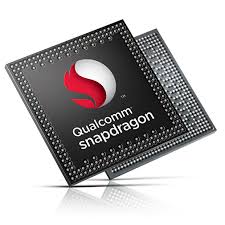The mobile chipset industry is evolving rapidly, with Qualcomm leading the charge in innovation. According to a recent report by TechJuice, Qualcomm is gearing up to release its next premium mobile chip, promising significant performance upgrades, enhanced AI capabilities, and improved energy efficiency. This new chip is expected to power flagship smartphones in 2025, setting a new benchmark for mobile processing power.

What’s New in Qualcomm’s Upcoming Chip?
While Qualcomm has not yet revealed the official name of its next flagship chip (likely the Snapdragon 8 Gen 4), leaks and industry insights suggest several key improvements:
1. Next-Gen CPU & GPU Performance
The new chip is rumored to feature a custom Oryon CPU core design, derived from Qualcomm’s acquisition of Nuvia. This shift from ARM’s stock designs could bring major performance and efficiency gains, potentially outperforming Apple’s A-series chips in multi-core tasks.
Additionally, the Adreno GPU is expected to see a significant upgrade, offering better gaming performance and ray-tracing support for more realistic mobile graphics.
2. Advanced AI & Machine Learning
AI is becoming a cornerstone of modern smartphones, and Qualcomm’s next chip is expected to include a more powerful NPU (Neural Processing Unit). This will enhance on-device AI tasks such as:
- Real-time language translation
- Advanced photography enhancements
- Smarter voice assistants
- Improved background app optimization
3. 3nm Manufacturing Process
The upcoming chip is likely to be built on TSMC’s 3nm process, making it more power-efficient while delivering higher performance. This would put it in direct competition with Apple’s A18 Pro chip, which is also expected to use a 3nm node.
4. 5G & Connectivity Upgrades
Qualcomm’s new modem, possibly the Snapdragon X80, will bring faster 5G speeds, better power efficiency, and improved satellite connectivity for emergency communications. Wi-Fi 7 support could also be included for ultra-fast wireless networking.
How Will This Impact Smartphones?
Flagship phones in late 2025 and early 2026—such as the Samsung Galaxy S25, OnePlus 13, and Xiaomi 15—are expected to feature this new chip. Consumers can anticipate:
- Longer battery life due to improved efficiency
- Console-level gaming with advanced GPU enhancements
- Better AI-powered cameras with real-time processing
- Faster app performance and multitasking
1. “Qualcomm Snapdragon 8 Gen 4 features”
The upcoming Qualcomm Snapdragon 8 Gen 4 is set to redefine premium smartphone performance with its cutting-edge features. Built on TSMC’s advanced 3nm process, this powerhouse chip will reportedly feature custom Oryon CPU cores for desktop-class processing, a next-gen Adreno GPU with enhanced ray tracing capabilities, and a dedicated AI engine for groundbreaking on-device intelligence. Early leaks suggest significant improvements in energy efficiency, 5G connectivity with the X80 modem, and Wi-Fi 7 support, making it a game-changer for 2025 flagship smartphones. Tech enthusiasts are particularly excited about its potential to rival Apple’s A-series chips in both raw power and AI performance.
2. “Best mobile processor 2025”
The battle for the best mobile processor in 2025 is heating up, with Qualcomm’s Snapdragon 8 Gen 4, Apple’s A18 Pro, MediaTek’s Dimensity 9400, and Samsung’s Exynos 2500 all vying for supremacy. Industry experts predict this year’s competition will focus on three key areas: AI processing capabilities, gaming performance with hardware-accelerated ray tracing, and energy efficiency through 3nm manufacturing. While Apple traditionally leads in single-core performance, Qualcomm’s shift to custom Oryon cores could narrow the gap, making the Snapdragon 8 Gen 4 a strong contender for Android users seeking flagship-level performance. The winner may ultimately come down to real-world benchmarks and thermal management in actual devices.
3. “AI smartphone chipset advancements”
Modern smartphone chipsets are undergoing an AI revolution, with Qualcomm’s next-gen Snapdragon processors leading the charge in on-device artificial intelligence. The upcoming flagship chips will feature dedicated neural processing units (NPUs) capable of handling complex machine learning tasks like real-time language translation, advanced computational photography, and predictive user behavior modeling. These AI smartphone chipset advancements mean faster, more private processing without cloud dependency, enabling features like instant photo enhancements, smarter voice assistants, and adaptive battery optimization. As AI becomes central to mobile experiences, manufacturers are racing to integrate specialized AI cores that can outperform general-purpose CPUs for machine learning workloads, setting the stage for a new era of intelligent smartphones.
The Role of AI in Next-Gen Mobile Chips
One of the most exciting aspects of Qualcomm’s upcoming chip is its focus on artificial intelligence (AI). With the rise of generative AI, on-device processing is becoming crucial for tasks like real-time photo editing, voice recognition, and predictive text. The new Snapdragon chip is expected to feature a dedicated AI engine that can handle complex machine learning models without relying on cloud servers. This means faster response times, better privacy, and more seamless integration of AI features in everyday smartphone use.
Gaming Performance: A Leap Forward
Mobile gaming continues to grow, and Qualcomm’s next chip is set to push the boundaries even further. The upgraded Adreno GPU, combined with hardware-accelerated ray tracing, could bring console-quality graphics to smartphones. Game developers will likely optimize their titles to take full advantage of this power, offering smoother frame rates, higher resolutions, and more immersive visuals. Additionally, improved thermal management could prevent overheating during long gaming sessions, making flagship phones even more appealing to gamers.
Battery Life & Efficiency Improvements
Despite the performance boost, Qualcomm’s new chip is expected to be more power-efficient thanks to TSMC’s 3nm manufacturing process. This means smartphones could deliver longer battery life even with heavy usage. The chip may also introduce smarter power distribution, dynamically adjusting performance based on the task at hand—whether it’s browsing, gaming, or streaming. For users frustrated with battery drain, this could be a major selling point.
The Future of Smartphone Photography
Computational photography has become a key battleground for smartphone makers, and Qualcomm’s next chip will likely bring new camera enhancements. With a stronger ISP (Image Signal Processor) and AI-powered processing, we could see improvements in low-light photography, 8K video recording, and real-time HDR adjustments. Some leaks even suggest multi-frame fusion at faster speeds, reducing motion blur and improving clarity in fast-moving scenes.
What This Means for the Smartphone Market
As Qualcomm prepares to launch its next flagship chip, the competition in the mobile processor space is fiercer than ever. Apple, MediaTek, and Samsung are all pushing their own innovations, which could lead to more choices for consumers. If Qualcomm delivers on its promises, we might see Android flagships closing the performance gap with iPhones, particularly in AI and gaming. The real winners, however, will be smartphone users, who can expect faster, smarter, and more efficient devices in the coming year.
Competition Heats Up: Apple, MediaTek, and Samsung
Qualcomm’s biggest rival, Apple, is also working on its A18 Pro chip, which will likely focus on AI and GPU improvements. Meanwhile, MediaTek’s Dimensity 9400 is expected to compete in the premium segment, and Samsung’s Exynos 2500 (with AMD GPU) could make a strong comeback.
Final Thoughts
Qualcomm’s next premium mobile chip is shaping up to be a game-changer, with major leaps in CPU, GPU, AI, and efficiency. As smartphone manufacturers push the boundaries of performance and innovation, consumers can look forward to faster, smarter, and more capable devices in 2025.
Would you upgrade to a phone with this new chip? Let us know in the comments!
Read more here
- Apple’s iOS 26.2: Rolling Back Liquid Glass and Redefining Design Flexibility

- The AI Data Center Boom: A Double-Edged Sword for America’s Infrastructure

- Beyond Neuralink: The “Something Stranger” Max Hodak Is Building to Redraw the Boundaries of the Mind

- THe Brain’s Fitbit: Awear’s Neuroscience Wearable is Redefining Stress Management

- Amazon Leo: Amazon’s Satellite Internet Rebrand Signals


Pingback: iPhone 17 May Abandon the Camera Control BUtton